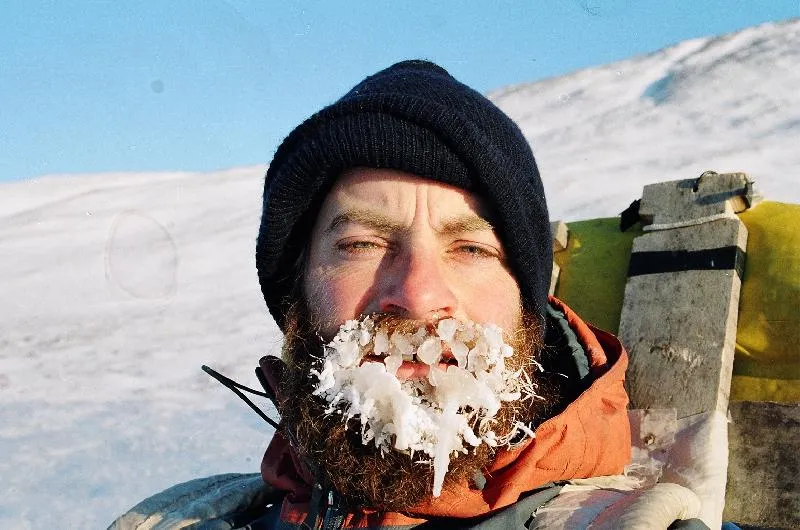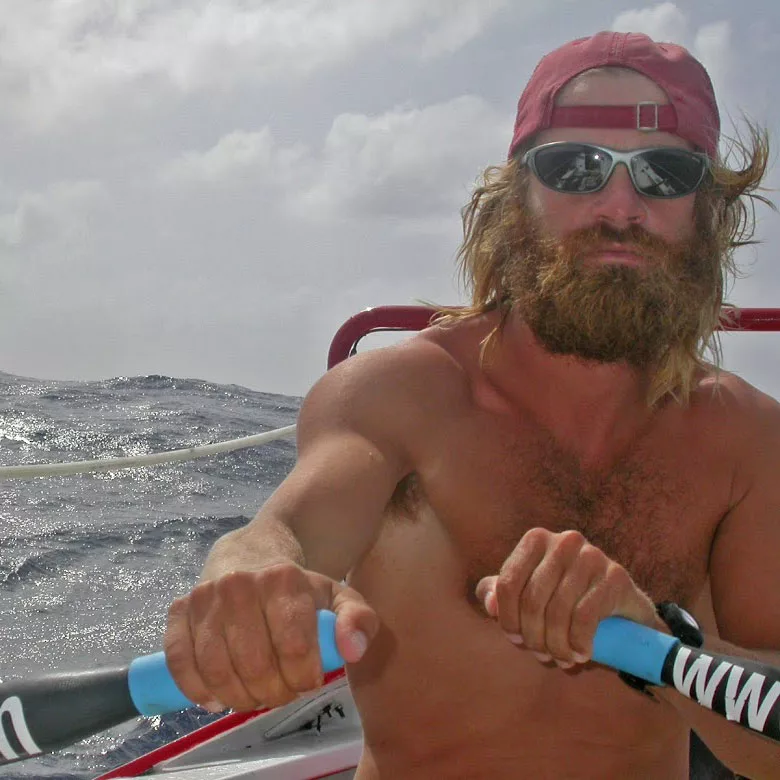Angus Adventures: Life Saving Brown Fat

Fat is generally a bad word in our society.
It connotes obesity, poor health and sedentary lifestyles. Longevity and fat are seldom synonymous and if, 10 years ago, someone were to tell me this greasy substance would one day save my life, I would have laughed. However, due to an unusual chain of events, I can now thank my very existence to a mysterious brown lipid that exists deep in our bodies.
The incident occurred several years ago, in northeast Siberia, during an expedition to circle the world via human power. It wasn’t an unusually frigid day for the region, the coldest inhabited area on the planet, but for us it was biting. With wind-chill, morning temperatures were below -100 degrees Celsius. In order to prevent deadly moisture from building up in our clothing, it was essential to dress on the extreme-cool side of comfortable. The heavy labour of making forward progress was the only way to keep hypothermia at bay.
I was travelling with a companion and we were cycling over the snow, our large tires supported by a crust formed by incessant winds and nominal precipitation. A Russian Ural, a six-wheeled-drive workhorse capable of crawling over the frozen tundra, followed us. The Ural carried most of our gear, allowing us to move unencumbered, and to switch between skis and bicycles depending on conditions.
The driving wind created whiteout conditions, and we were struggling through a featureless, achromatic world. Without vegetation or trees to provide reference, there was no distinction between ground and sky. The only visual cue to guide us forward was a line of two-metre stakes placed about 30 metres apart, erected specifically for these kinds of conditions to guide villagers between communities.
A combination of fading light and a missing stake caused me to become separated and lost in a world of greying white. Without the stakes for guidance, my eyes were suddenly useless. Like a man who had slipped off a precipice, the gravity of my new reality hit hard. My reserves were spent, my clothing inadequate and navigating in these conditions without instruments was impossible. I abandoned my bicycle and stumbled around fruitlessly in the fading light, trying to relocate the breadcrumb trail of stakes. Nothing.
A feeling of great depression sank in. I’d heard countless tales of people in this region succumbing to conditions similar to what I was facing — poor visibility turning a quick trip to the outhouse into a tragedy, with the body located hours or days later, frozen and waxy, sprawled out in the snow. The odds were suddenly against me; it was now inky black, I was lost and tired and hypothermia was setting in as I shivered uncontrollably.
I knew I had no chance of finding the remote community of about 30 inhabitants that we had been aiming for all day. Instead, my only hope was to try to survive through the 16-hour night, and pray that visibility would increase enough so I could re-locate the stake trail in daylight.
The only way to stem my body’s rapid heat loss was to get out of the 70-km/hr winds. With my gloved hands and a pocketknife, I started cutting and clawing at the snow crust. Once I reached the softer snow underneath, I dug to the tundra before undercutting the crust to create a snow cave. The shallow snow limited the cave height to about 40 centimetres, but fortunately I am naturally very flexible. I crossed my legs, folded my torso over my knees, and wriggled into my tiny shelter. The incessant roar of the wind ceased, as if a switch had been flipped, but I was still agonizingly cold. My anguish was compounded by the thought that I was likely living the last moments of my life — alone and cold.
After an hour or so, despite feeling colder and more uncomfortable than ever, my shivering stopped and I began breathing heavily. I felt I couldn’t get enough air and started panting, as though I were running a marathon. I remained this way, panting and gasping, for 10 hours. Periodically, I would climb out of the cave to stretch my contorted muscles and look for lights from a potential search party.
At about 2:00 a.m., I discerned the faintest glow in the distance. Not sure if it was a trick of my imagination, I felt I had little to lose by walking towards it. As I staggered, panting and gasping, towards the light, it soon became apparent it was very real, turning out to be a lone beacon marking the remote community we’d been aiming for. When I pushed through the front door of the largest building, a group of men sitting around a table looked up in surprise. They had been searching for me in tracked vehicles, eventually giving up. They concluded there was little chance I could have survived this long in the clothing I was wearing.
For years after the incident, I wondered what physiological processes had occurred that night. The panting was so intense I had frostbite inside my mouth and down my throat. Additionally, a paunch that I’d purposely acquired for dealing with the rigours of Siberia had disappeared overnight. It seemed as if my metabolism had been revved to an impossibly high level to combat the cold, burning through my reserves of fat. As far as I knew, the human body doesn’t react to the cold in this way and the energy in fat cannot be metabolized so quickly. I wondered if it was a peculiar survival adaptation passed on from my ancestors, who eked out an existence in northern Europe.
New research has provided the answer to this personal mystery in the name of “brown fat,” or “brown adipose tissue.” Brown fat exists abundantly in newborns, hibernating animals and marine mammals. It is very different than regular fat, and its job is to generate heat without physical activity. It is a very complex process and large amounts of oxygen are required for the thermogenesis to take place (hence the heavy breathing). Although scientists have long known about brown fat, it was thought for humans to only exist in newborns, since they can’t shiver and are particularly susceptible to hypothermia. New studies have revealed, however, that it exists in varying quantities in adults. Lean, athletic individuals generally have greater amounts of brown fat than overweight people, and being frequently subjected to cold conditions helps stimulate it.
Brown fat does not hang in rolls, but instead is stored deep in the body between muscle tissue in the back and neck. It regulates a process that burns not only fat stored within its own tissue, but also stimulates rapid burning of regular “white fat” stored in other parts of the body. (Not surprisingly, there is currently abundant research seeking ways of promoting brown fat production and stimulation as an elixir for the weight-loss industry.) My personal experience of losing a small potbelly overnight speaks volumes about brown fat’s potential.
So, for those of you set on enjoying backcountry winter activities, maybe it’s time to start exercising your brown fat as well as your muscles. Not only will it help save your butt if you get lost, but you’ll also feel more comfortable when the central heating breaks down at your ski chalet. There are three things you can do to naturally promote and stimulate brown fat: exercise, stay lean and frequently expose yourself to cool temperatures. A Dutch study indicates that spending extended periods at 15 degrees Celsius can do the job, but if you can stand colder, hey, it’s probably all the better.
Most importantly, though, make sure you don’t get lost so you won’t require the brown goo to see you through in the first place.
This article originally appeared in our Winter 2014 issue.














